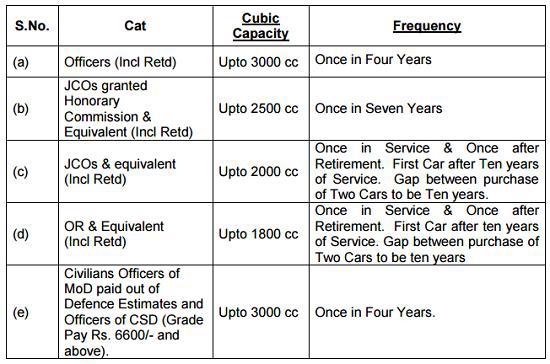2019 Mazda three to feature world-first HCCI engine for efficiency: report
2017 Mazda MAZDA3
It’s a technology that’s been a sort of Holy Grail in the auto industry for at least a duo of decades.
Now Mazda, one of the smallest global automakers, plans to introduce it in a radical fresh engine to be used in a future Mazda vehicle in 2019.
It’s called homogeneous charge compression ignition, or HCCI: in essence it lets a gasoline engine behave like a diesel under low-power request, vastly improving its efficiency.
The fresh engines capable of HCCI, which will be known as SkyActiv-X, are thought to be destined for the next-generation Mazda three compact hatchback and sedan.
Mazda calls its version Spark Managed Compression Ignition, indicating that they contain a spark cork for conventional operation under conditions less than ideal for HCCI to work.
The sparkless compression ignition performs best within a specific temperature range.
2017 Mazda MAZDA3
If the engine is too cold, its spectacle falls; too hot, and you get pre-ignition, or knock.
To prevent those occurrences, the SkyActiv-X engine will revert to conventional spark ignition when needed.
The company says their efficiency will be twenty to thirty percent better than its current SkyActiv engines, launched in 2012.
It will also be fitted with a mechanical supercharger, to pack more air into the cylinders, boosting power ten to thirty percent over the current generation of SkyActiv engines now used across Mazda’s lineup.
Mazda confirmed its plans to launch engines using HCCI, which had been rumored earlier, as it released a statement on its “Sustainable Zoom-Zoom 2030” plan to slash the wells-to-wheels carbon emissions of its future vehicles.
That plan contained a number of goals, suggesting that it would prioritize “efficiency improvements for cleaner emissions that apply in the real world.” Accordingly, Mazda will:
Fresh GM HCCI Engine
- Aim to cut its corporate “wells to wheels” CO2 emissions to half their two thousand ten level by 2030, and to just ten percent by 2050
- Proceed its efforts to “ideal the internal combustion engine,” which the company believes “will help power the majority of cars worldwide for many years to come and can therefore make the greatest contribution to reducing carbon dioxide emissions”
- Combine its more-efficient engines with “effective electrification technologies”
- Introduce electrical vehicles and “other electric-drive technologies” from two thousand nineteen in “regions that use a high ratio of clean energy for power generation” and those areas that “restrict certain vehicles to reduce air pollution”
That last point is worth unpacking: the 2nd half clearly refers to China.
That country has proposed fairly Draconian requirements for plug-in vehicle sales, modeled on a much more aggressive version of California’s zero-emission vehicle rules.
2019 Mazda three to feature world-first HCCI engine for efficiency: report
2019 Mazda three to feature world-first HCCI engine for efficiency: report
2017 Mazda MAZDA3
It’s a technology that’s been a sort of Holy Grail in the auto industry for at least a duo of decades.
Now Mazda, one of the smallest global automakers, plans to introduce it in a radical fresh engine to be used in a future Mazda vehicle in 2019.
It’s called homogeneous charge compression ignition, or HCCI: in essence it lets a gasoline engine behave like a diesel under low-power request, vastly improving its efficiency.
The fresh engines capable of HCCI, which will be known as SkyActiv-X, are thought to be destined for the next-generation Mazda three compact hatchback and sedan.
Mazda calls its version Spark Managed Compression Ignition, indicating that they contain a spark buttplug for conventional operation under conditions less than ideal for HCCI to work.
The sparkless compression ignition performs best within a specific temperature range.
2017 Mazda MAZDA3
If the engine is too cold, its spectacle falls; too hot, and you get pre-ignition, or knock.
To prevent those occurrences, the SkyActiv-X engine will revert to conventional spark ignition when needed.
The company says their efficiency will be twenty to thirty percent better than its current SkyActiv engines, launched in 2012.
It will also be fitted with a mechanical supercharger, to pack more air into the cylinders, boosting power ten to thirty percent over the current generation of SkyActiv engines now used across Mazda’s lineup.
Mazda confirmed its plans to launch engines using HCCI, which had been rumored earlier, as it released a statement on its “Sustainable Zoom-Zoom 2030” plan to slash the wells-to-wheels carbon emissions of its future vehicles.
That plan contained a number of goals, suggesting that it would prioritize “efficiency improvements for cleaner emissions that apply in the real world.” Accordingly, Mazda will:
Fresh GM HCCI Engine
- Aim to cut its corporate “wells to wheels” CO2 emissions to half their two thousand ten level by 2030, and to just ten percent by 2050
- Proceed its efforts to “ideal the internal combustion engine,” which the company believes “will help power the majority of cars worldwide for many years to come and can therefore make the greatest contribution to reducing carbon dioxide emissions”
- Combine its more-efficient engines with “effective electrification technologies”
- Introduce electrified vehicles and “other electric-drive technologies” from two thousand nineteen in “regions that use a high ratio of clean energy for power generation” and those areas that “restrict certain vehicles to reduce air pollution”
That last point is worth unpacking: the 2nd half clearly refers to China.
That country has proposed fairly Draconian requirements for plug-in vehicle sales, modeled on a much more aggressive version of California’s zero-emission vehicle rules.
